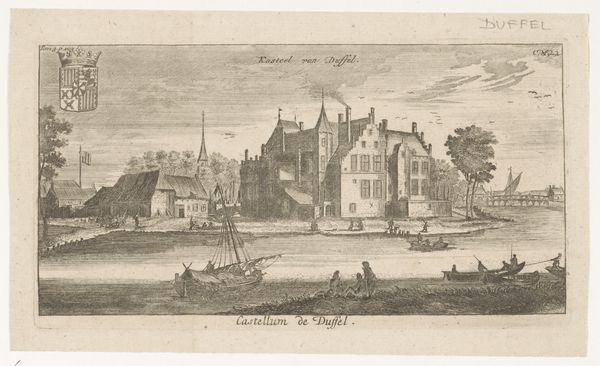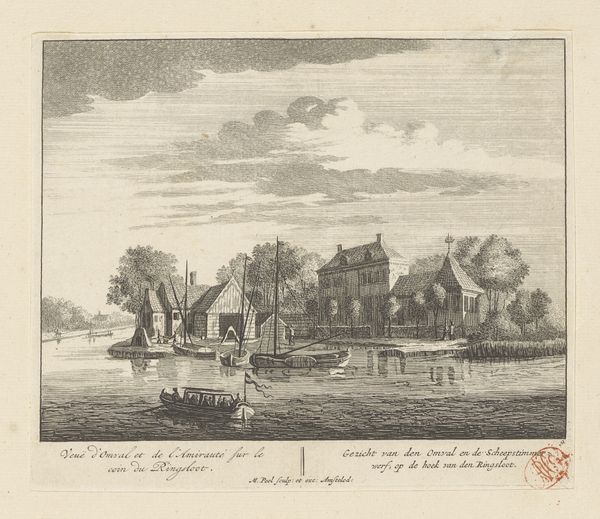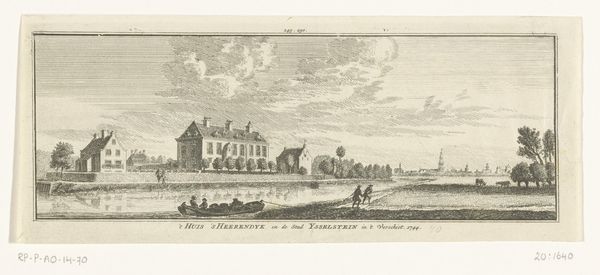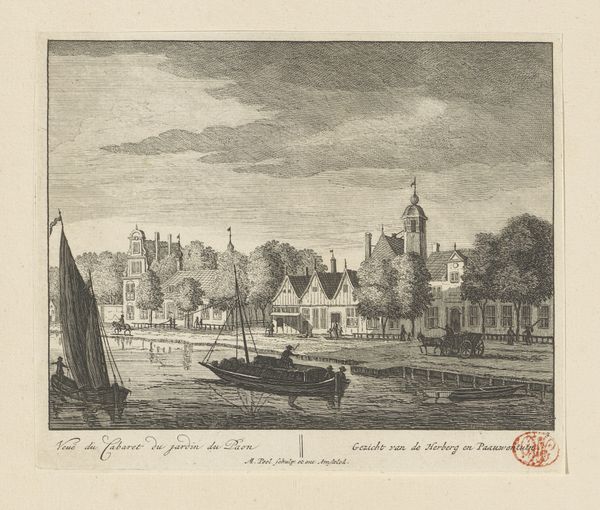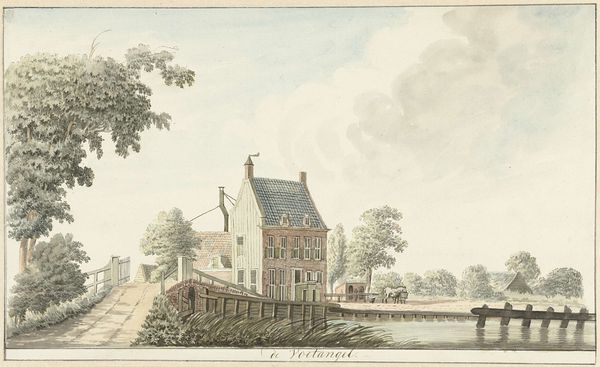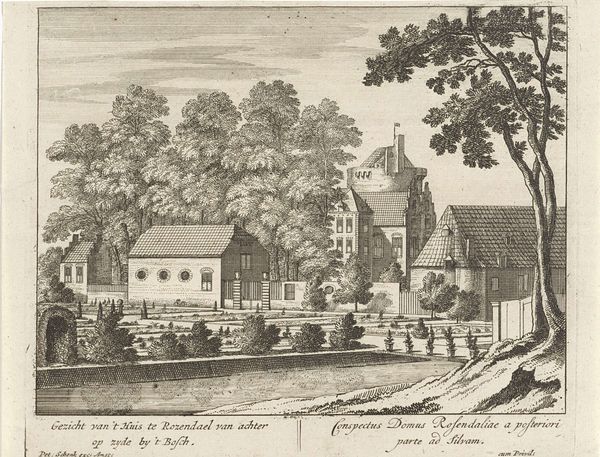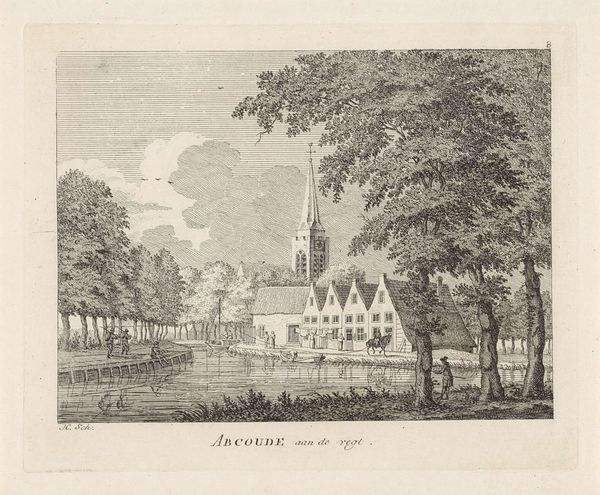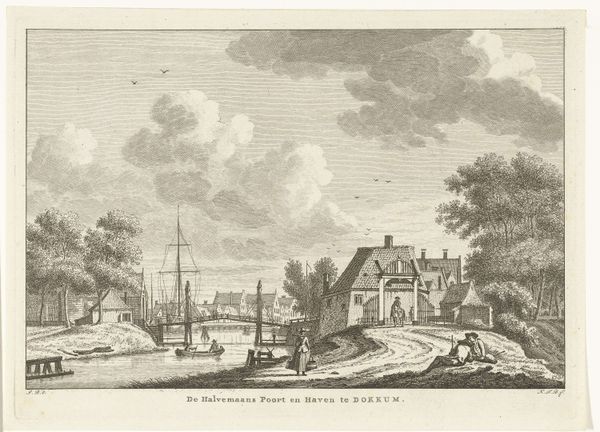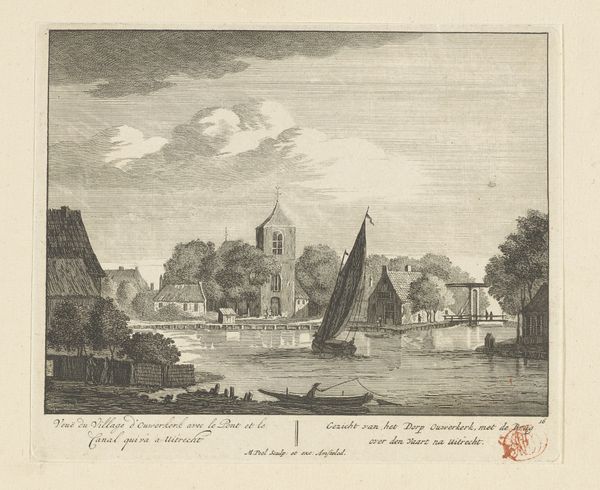
print, etching, engraving
neoclacissism
aged paper
etching
old engraving style
landscape
19th century
cityscape
engraving
Dimensions: height 172 mm, width 204 mm
Copyright: Rijks Museum: Open Domain
Curator: This is "Gezicht op Gellicum," an engraving by Hermanus Petrus Schouten. Its creation is dated somewhere between 1762 and 1822 and it provides an evocative snapshot into a specific location. Editor: Gellicum looks rather imposing! Stark, almost. Like a lonely fortress guarding a placid mirror. And those clouds! They’re scribbled in, swirling with secrets. Curator: It reflects the neoclassical trend of landscape art during that time, emphasizing order and clarity, as seen in the relatively structured composition. It is, of course, a fabricated perspective as with any artwork—but that sense of order was very fashionable then. Editor: Fashionable melancholy, perhaps? I keep picturing the solitary figure in that little boat. He’s either going to or coming from somewhere rather important, I reckon. A secret assignation maybe? Or just popping down to the shops. Who knows? It makes me wonder what it was like back then. Curator: Such prints were indeed powerful tools of representation. They helped to visualize and promote particular places within the burgeoning tourism and mapping industries. What we're really seeing here is a negotiation of power relations, etched into paper. Editor: And that’s the slightly scary bit. Isn't it? A fixed idea of a place, rendered as... propaganda, almost. Even though I doubt the artist thought of it that way, it has its own subtle political force. Curator: I think it provides a critical perspective on our present as we reflect on how this piece creates a particular vision and omits the chaos and the social circumstances of its creation. It can encourage deeper reflection and more thoughtful consumption of images as historical and constructed objects. Editor: Yes, and to really see it is to look beyond that calm surface. It feels alive with untold narratives just beneath that inky facade.
Comments
No comments
Be the first to comment and join the conversation on the ultimate creative platform.


